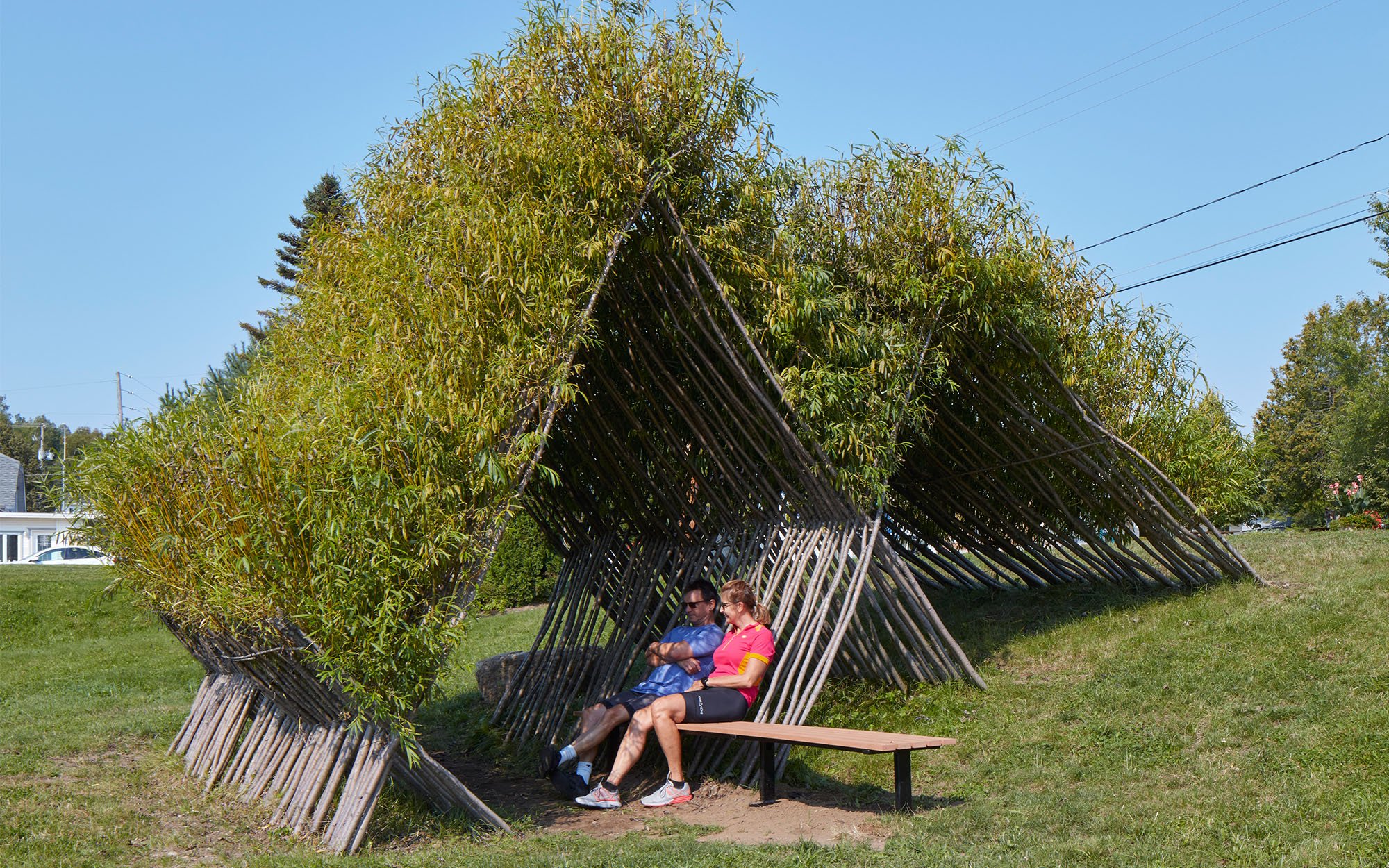
February 7, 2023
Cultivating a Human Habitat from Living Materials
Breakthroughs in technology often cause more problems than they solve, resulting in negative consequences like social disorder, environmental degradation, and economic marginalization. But the winners of our second annual Responsible Disruptors program demonstrate that when employed thoughtfully, technology can make change for the better and disruption can be ethical.
Is it possible to produce a human structure that is more compatible with the habitats of other life-forms—one that evolves with the seasons and contributes to the ecosystems around it? This question feels existential against the backdrop of our present-day built environment, and it led architects Sylvain Bilodeau and Nicolas Mathieu-Tremblay of Quebec-based firm Architecturama to a tangible vision for their Living Architecture prototype. The firm’s tentlike, triangular structure was made of a living willow tree and resided from 2019 to 2022 in the village of Saint-Alphonse-Rodriguez, where it served as a sculpture, shelter, and community gathering space.

With its practice operating at the intersection of architecture and public art, the Architecturama team was motivated to find more sustainable approaches to its projects. “We were asking ourselves, ‘How can we do something to animate the public spaces with less environmental impact?’” Bilodeau explains. After receiving a grant from the Lanaudière Territorial Partnership Programme and the Conseil des arts et des lettres du Québec that required the firm to work with regional collaborators near the project’s site, Architecturama landed on the willows grown by a local producer for its structural form. “The willow is a fantastic plant because it grows very fast. It also can be used for phytoremediation, so it is a plant that works well for these structures,” Mathieu-Tremblay says.

The Living Architecture project’s success could be seen through the response of Saint-Alphonse-Rodriguez residents, whom the architects found supportive. A local volunteer committee was intimately involved in assisting with the structure’s installation, watering, foliage maintenance, and trimming, which enabled it to live on beyond the grant-funded period. While the intimacy of the relationship between the small community and Living Architecture reflects an essential beginning for the project, Architecturama hopes to scale up the prototype for larger cities in the future. “Because of the living component, we saw this project as an experiment,” says Mathieu-Tremblay. “Now that it’s been done at a small scale and we learned of the things [that] didn’t work quite as we planned, we hope to make bigger projects with living materials.”
Would you like to comment on this article? Send your thoughts to: [email protected]
Latest
Profiles
BLDUS Brings a ‘Farm-to-Shelter’ Approach to American Design
The Washington D.C.–based firm BLDUS is imagining a new American vernacular through natural materials and thoughtful placemaking.
Projects
MAD Architects’ FENIX is the World’s First Art Museum Dedicated to Migration
Located in Rotterdam, FENIX is also the Beijing-based firm’s first European museum project.
Products
Discover the Winners of the METROPOLISLikes 2025 Awards
This year’s product releases at NeoCon and Design Days signal a transformation in interior design.





